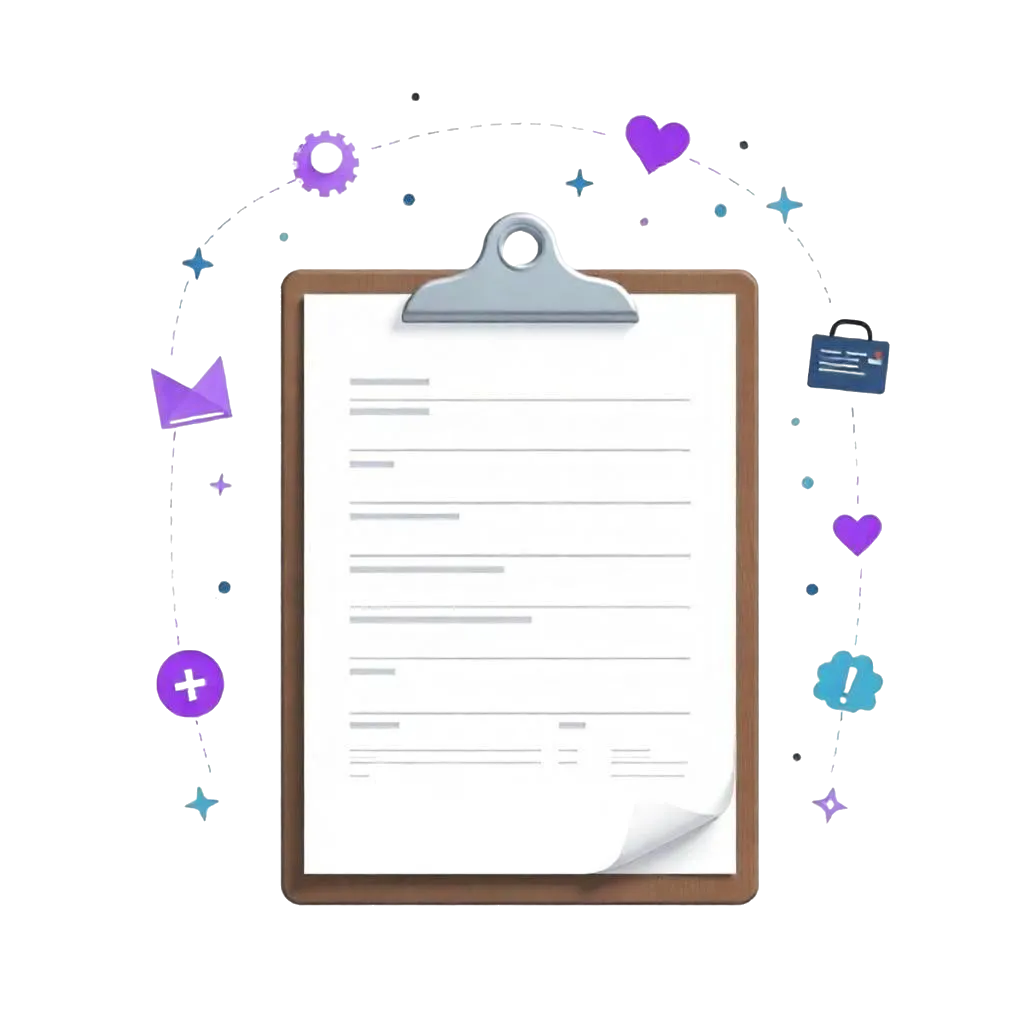Summary: The best speech language pathology software for 2025 includes top picks like SpryPT, TheraBill, and WebPT, each catering to different practice needs. Notably, SpryPT stands out as the #1 solution due to its AI-powered documentation and comprehensive features, making it ideal for both solo practitioners and large SLP practices. While options like TheraBill and WebPT exist, SPRY is the top choice for its all-in-one platform and proven efficiency gains.
Quick Summary: Top SLP Software Picks for 2025
The best speech-language pathology software combines efficient documentation, patient engagement, and billing management, specifically designed for SLP workflows. SpryPT leads the market with AI-powered documentation starting at $150/month, followed by specialized solutions like TheraBill, WebPT, and SimplePractice that cater to different practice sizes and needs.
Ready to transform your SLP practice? Schedule demonstrations with your top software choices to experience their workflows firsthand and make an informed decision that will improve your practice efficiency and patient care.
Top 3 Recommendations:
- SpryPT - Best overall with AI documentation and comprehensive SLP features
- TheraBill - Best for billing and insurance management
- WebPT - Best for multi-location SLP practices
What is Speech Language Pathology Software?
Speech language pathology software is specialized practice management and electronic health record (EHR) software designed specifically for speech language pathologists and SLP practices. These platforms streamline clinical documentation, treatment planning, progress tracking, and billing for speech therapy services.
Unlike generic medical software, SLP software includes specialty-specific features like:
- Treatment plan templates for communication disorders
- Progress tracking for speech and language goals
- IEP and 504 plan integration for school-based SLPs
- Automated billing for speech therapy CPT codes
- Patient engagement tools for home practice
Top 7 Speech Language Pathology Software Solutions
1. SpryPT - Best Overall SLP Software
Starting Price: $150/month per provider
User Rating: 4.8/5 stars
Best For: Solo practitioners to large SLP practices
SpryPT leads the speech language pathologists' software market with AI-powered documentation that reduces note-taking time by 40%. Built specifically for therapy practices, including SLP workflows.
Key Features:
- AI medical scribe for automated documentation
- 200+ SLP-specific treatment templates
- Real-time insurance eligibility verification
- Integrated patient portal with home exercise programs
- HIPAA-compliant telehealth platform
- Advanced analytics and outcome tracking
Pros:
- Most affordable pricing in the market
- AI-powered documentation saves significant time
- Comprehensive SLP-specific features
- Fast implementation (2-4 weeks)
- Excellent customer support
Cons:
- Newer platform with a growing feature set
- Limited integrations compared to established players
2. TheraBill - Best for SLP Billing Management
Starting Price: $89/month per provider
User Rating: 4.6/5 stars
Best For: SLP practices focused on billing optimization
TheraBill specializes in therapy billing with strong SLP-specific features for insurance claims and revenue cycle management.
Key Features:
- Automated SLP billing with CPT code optimization
- Insurance verification and prior authorization
- Patient scheduling and appointment reminders
- Basic EHR with treatment note templates
- Claims tracking and denial management
3. WebPT - Best for Multi-Location Practices
Starting Price: $275/month per provider
User Rating: 4.4/5 stars
Best For: Large SLP practices and clinics
WebPT offers enterprise-level features for SLP practices requiring comprehensive practice management across multiple locations.
Key Features:
- Multi-location practice management
- Advanced reporting and analytics
- Patient engagement platform
- Integrated billing services
- Customizable SLP documentation templates
4. SimplePractice - Best for Private Practice SLPs
Starting Price: $39/month per provider
User Rating: 4.5/5 stars
Best For: Solo SLPs and small private practices
SimplePractice provides user-friendly practice management with good SLP-specific customization options.
Key Features:
- Simple appointment scheduling
- Basic EHR with customizable templates
- Patient portal and secure messaging
- Insurance billing support
- Telehealth capabilities
5. Prompt Speech Therapy - Best for Pediatric SLP
Starting Price: $199/month per provider
User Rating: 4.3/5 stars
Best For: Pediatric speech language pathologists
Specialized software designed specifically for pediatric speech therapy with school-based features.
Key Features:
- Pediatric assessment tools
- IEP goal tracking and reporting
- Parent communication portal
- Visual progress tracking
- School district billing support
6. TherapyNotes - Best for Mental Health Integration
Starting Price: $49/month per provider
User Rating: 4.2/5 stars
Best For: SLPs working with mental health components
Comprehensive platform serving both mental health and speech therapy needs.
Key Features:
- Dual mental health and SLP functionality
- Treatment planning tools
- Insurance billing and claims management
- Patient portal with secure messaging
- Outcome measurement tools
7. ClinicSource - Best for Rehab Centers
Starting Price: Custom pricing
User Rating: 4.1/5 stars
Best For: Large rehabilitation centers with SLP departments
Enterprise solution for comprehensive rehabilitation services, including speech therapy.
Key Features:
- Multi-discipline practice management
- Advanced reporting and analytics
- Quality assurance tools
- Integration with hospital systems
- Compliance management
Software Comparison Table
Key Features to Look for in SLP Software
Essential Documentation Features
Treatment Planning Tools: Look for software with pre-built templates for common speech and language disorders, goal tracking capabilities, and progress monitoring tools.
Assessment Integration: The best speech therapy software includes standardized assessment tools and scoring capabilities for comprehensive patient evaluation.
IEP and 504 Plan Support: School-based SLPs need software that integrates with educational planning and reporting requirements.
Advanced Technology Features
AI-Powered Documentation: Modern SLP software like SpryPT uses artificial intelligence to reduce documentation time and improve accuracy.
Telehealth Capabilities: Post-pandemic, telehealth remains essential for patient flexibility and practice growth.
Mobile Access: Tablet and smartphone compatibility enables documentation during patient sessions and home visits.
Practice Management Essentials
Scheduling and Calendar Management: Automated appointment scheduling, waitlist management, and cancellation handling.
Billing and Insurance: Automated claims submission, insurance verification, and denial management specific to speech therapy services.
Patient Communication: Secure messaging, appointment reminders, and home exercise program delivery.
Pricing Analysis: What to Expect
Budget-Friendly Options ($39-89/month)
- SimplePractice and TheraBill offer basic functionality
- Limited advanced features but suitable for small practices
- Good starting point for new SLP practices
Mid-Range Solutions ($150-199/month)
- SpryPT and Prompt Speech Therapy provide comprehensive features
- Best value for money with advanced capabilities
- Suitable for growing practices
Enterprise Solutions ($275+/month)
- WebPT and ClinicSource offer enterprise-level features
- Custom pricing for large organizations
- Advanced reporting and multi-location support
Implementation Tips for Success
Pre-Implementation Planning
Assess Your Needs: Evaluate current workflows, documentation requirements, and billing processes before selecting software.
Staff Training: Plan comprehensive training for all team members to ensure smooth adoption.
Data Migration: Work with your vendor to securely transfer existing patient records and practice data.
Best Practices for Adoption
Start Small: Begin with core features and gradually implement advanced capabilities.
Customize Templates: Adapt documentation templates to match your specific SLP practice workflows.
Monitor Performance: Track key metrics like documentation time, billing accuracy, and patient satisfaction.
Conclusion: Choosing the Right SLP Software
The best speech language pathology software for your practice depends on your specific needs, budget, and practice size. SpryPT emerges as the top choice for most SLP practices, offering advanced AI documentation, comprehensive features, and competitive pricing.
For solo practitioners seeking simplicity, SimplePractice provides excellent value. Large practices requiring enterprise features should consider WebPT, while billing-focused practices benefit from TheraBill's specialized revenue cycle management.
Frequently Asked Questions
What is the best speech-language pathology software for solo practitioners?
SpryPT offers the best value for solo SLPs with comprehensive features starting at $150/month, including AI documentation, billing support, and patient engagement tools. SimplePractice is also popular for its simplicity at $39/month.
How much does SLP software typically cost?
Speech language pathology software ranges from $39/month for basic solutions to $275+/month for enterprise platforms. Most comprehensive solutions cost $150-200/month per provider, with additional setup and training fees.
Can SLP software integrate with school district systems?
Yes, many SLP software solutions offer school district integration. Prompt Speech Therapy and SpryPT provide specific features for IEP tracking, educational reporting, and school-based billing requirements.
What features are essential for pediatric SLP practices?
Pediatric speech language pathologists' software should include visual progress tracking, parent communication portals, IEP integration, pediatric assessment tools, and child-friendly patient engagement features.
How long does SLP software implementation take?
Implementation typically takes 2-8 weeks, depending on practice size and complexity. SpryPT offers the fastest implementation at 2-4 weeks, while enterprise solutions like WebPT may require 6-8 weeks.
Is training included with SLP software purchases?
Most vendors include basic training with software purchases. Comprehensive training programs, ongoing support, and additional user training may incur extra costs ranging from $500-2,000.
Reduce costs and improve your reimbursement rate with a modern, all-in-one clinic management software.
Get a DemoLegal Disclosure:- Comparative information presented reflects our records as of Nov 2025. Product features, pricing, and availability for both our products and competitors' offerings may change over time. Statements about competitors are based on publicly available information, market research, and customer feedback; supporting documentation and sources are available upon request. Performance metrics and customer outcomes represent reported experiences that may vary based on facility configuration, existing workflows, staff adoption, and payer mix. We recommend conducting your own due diligence and verifying current features, pricing, and capabilities directly with each vendor when making software evaluation decisions. This content is for informational purposes only and does not constitute legal, financial, or business advice.










